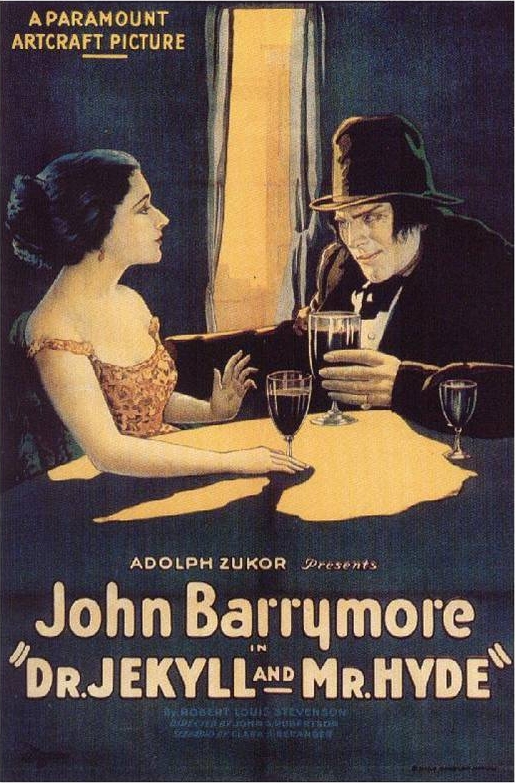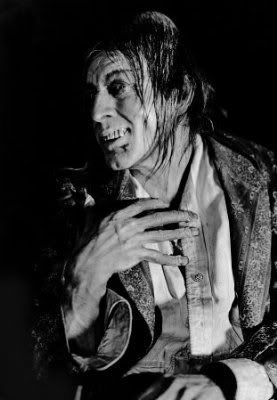Dr. Jekyll and Mr. Hyde (1920)
 Robert Louis Stevenson's novella The Strange Case of Dr. Jekyll and Mr. Hyde comes the silver screen starring John Barrymore. True, this was not the first adaptation of this particular story (and far from the last) with versions produced in 1908, 1912, and 1913, but they ranged from 13 to 26 minutes in length, so this would mark the first feature-length version of the story about the scientist that learns how to split his personalities.
Robert Louis Stevenson's novella The Strange Case of Dr. Jekyll and Mr. Hyde comes the silver screen starring John Barrymore. True, this was not the first adaptation of this particular story (and far from the last) with versions produced in 1908, 1912, and 1913, but they ranged from 13 to 26 minutes in length, so this would mark the first feature-length version of the story about the scientist that learns how to split his personalities.Starring as both Dr. Jekyll and Mr. Hyde is John Barrymore, the youngest member of the famous Barrymore family that was widely known for their work on stage and on screen, which included his older brother Lionel and sister Ethel. John is also the grandfather of Drew Barrymore, continuing the Barrymore acting legacy to this day. John's skills of contorting his face and his body along with the additions of make-up would do a marvelous job of making the two personalities look so very different that one would think they were played by two different actors.
The story follows Dr. Jekyll, a very self sacrificing doctor that runs a free clinic for those in need. Jekyll is taunted by a colleague of his, Sir George Carew, who happens to be the father of his fiancée, Millicent. Carew accuses that no man can be as good as Jekyll and that Jekyll has not lived, and will not truly live if all he does is good without letting the evil part of the person take over every once and a while. This sends Jekyll it considering the idea of a split personality of good and evil that embodies everyone, and the possibility of separating the two by science. Thus, Jekyll invents his potion that makes him into a hideously evil man named Edward Hyde, who's thoughts and actions are equaled by his appearance.
Hyde carries on Jekyll's double life in the seedy parts of London, spending his time in bars, dance halls, and opium dens. Each time Jekyll turns into Hyde he becomes worse personally, and in turn physically. Jekyll does have a potion that turns him back to his normal self, but as time goes on Hyde is more in control.
Due to the absence of Millicent's fiancée, Carew goes to Jekyll's lab to find answers, where he discover's Jekyll/Hyde's truth which leads to Hyde murdering Carew. Jeyll locks himself in his lab in fear of further harm to others, but Millicent comes in search of Jekyll, where once again Hyde takes over with no way to turn back to Jekyll. Millicent then watches as the convulses as the internal struggle of good and evil kills Jekyll/Hyde.

I'm sure this was quite a horror film of its day, with the the inclusion of Barrymore giving the film the huge star appeal of that time. The transition scenes worked with the skill of John Barrymore's convulsions fading into the full make-up of the Hyde character, which worked very well. It is this adaptation that is the one that was highly recreated with the likes of Warner Bros. cartoons and other such imitations for many years afterwords. It is because of films like this that lead to the horror films that would come later as well as plant the seed for the creation of the evil looking creature in future films with his crazy, bugged out eyes and evil grin. Because of films like this, future filmmakers are given the gift of imagining what else they can do to thrill the audience.
.jpg)
.jpg)
Comments
Post a Comment